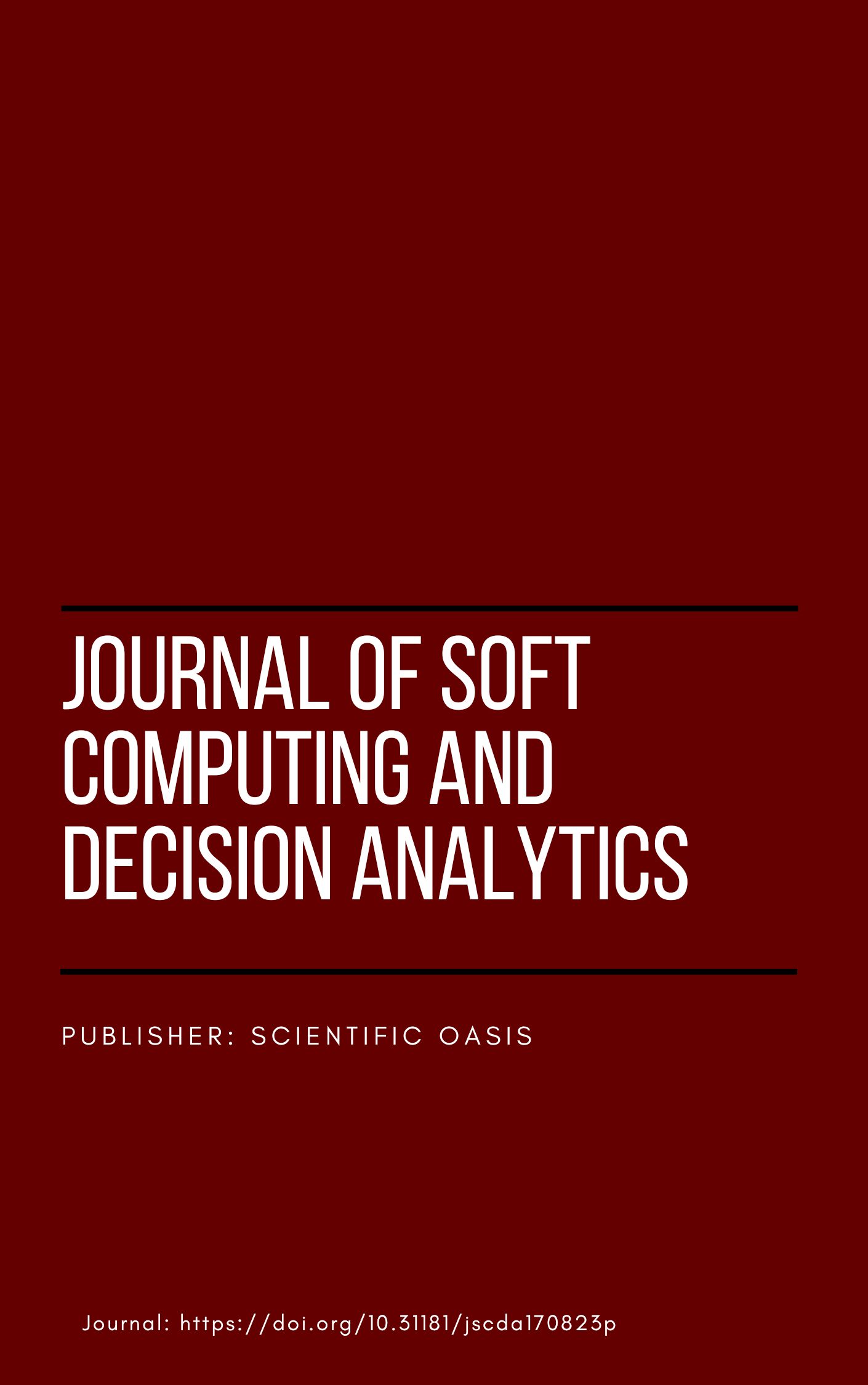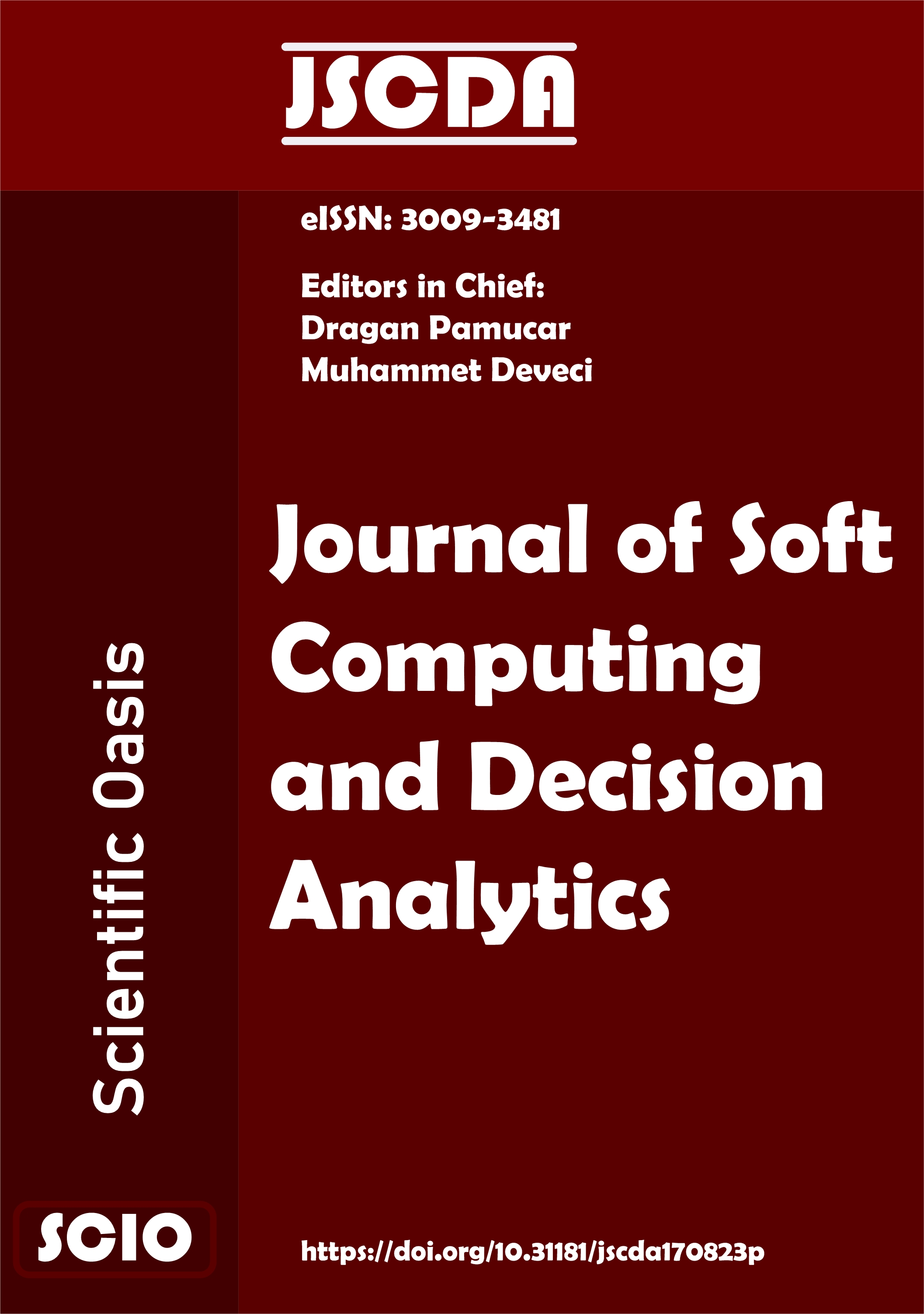Integration of Personnel Services with Public Transportation Modes: A Case Study of Bogazici University
DOI:
https://doi.org/10.31181/jscda1120231Keywords:
Personnel services, Vacancy optimization, Public transport, IntegrationAbstract
Personnel service is a common application that is offered by employers to provide comfortable transportation for the employees. It is mostly applied in developing countries and even though it brings some convenience for both sides, it also has downsides. Especially, the extra cost of the system for institutions and additional congestion created during peak hours due to the wrong optimization of the service routes are huge problems that can be fixed by proper applications. Moreover, such an optimization would create huge benefits in general because of the extensiveness of the application. Besides some of the employees have complaints about the arrangement of the services which results in private car usage in the long term. The purpose of this study is to optimize the personnel service system in a systematic way and additionally, to combine the system with public transportation to be able to obtain a new approach. Therefore, the first method optimizes the routes whereas the second method gives a new suggestion for the system. The data of the study is obtained from the current personnel services of Boğaziçi University. During the process, the Geographic Information System (GIS) is utilized to investigate all possibilities. The study showed that both of the offered methods results better than the conventional approach by improving personnel welfare, congestion during peak hours and transportation habits.
References
Nurkovic, A., Demirel, M., Gokasar, I., Işık, S., & Ersoy, C. (2015). Toplu Taşıma Araçlarıyla Seyahat için Akıllı Yönlendirme. https://www.researchgate.net/publication/272019861_Toplu_Tasima_Araclariyla_Seyahat_icin_Akilli_Yonlendirme
Edwards, R. D. (2008). Public transit, obesity, and medical costs: Assessing the magnitudes. Preventive Medicine, 46(1), 14–21. https://doi.org/10.1016/J.YPMED.2007.10.004
Litman, T. (2010). Evaluating Public Transportation Health Benefits Summary of Findings. www.vtpi.orgInfo@vtpi.org
Banister, D. (2002). Transport Planning. Spon. https://www.routledge.com/Transport-Planning/Banister/p/book/9780415261722
Silva, C. B. P. da, Saldiva, P. H. N., Amato-Lourenço, L. F., Rodrigues-Silva, F., & Miraglia, S. G. E. K. (2012). Evaluation of the air quality benefits of the subway system in São Paulo, Brazil. Journal of Environmental Management, 101, 191–196. https://doi.org/10.1016/J.JENVMAN.2012.02.009
Türkiye İstatistik Kurumu. (n.d.). İstanbul Nüfusu. Retrieved August 22, 2023, from https://biruni.tuik.gov.tr/medas/?kn=95&locale=tr
TomTom. (n.d.). Istanbul traffic report | . Retrieved August 22, 2023, from https://www.tomtom.com/traffic-index/istanbul-traffic/
United States Department of Transportation. (n.d.). Bureau of Transportation Statistics. Retrieved August 22, 2023, from https://www.bts.gov/
Manaugh, K., & El- Geneidy, A. (2012). Who benefits from new transportation infrastructure? Using accessibility measures to evaluate social equity in public transport provision. Chapters, 211–227. https://ideas.repec.org/h/elg/eechap/14718_12.html
Paulley, N., Balcombe, R., Mackett, R., Titheridge, H., Preston, J., Wardman, M., Shires, J., & White, P. (2006). The demand for public transport: The effects of fares, quality of service, income and car ownership. Transport Policy, 13(4), 295–306. https://doi.org/10.1016/J.TRANPOL.2005.12.004
Handy, S. L., & Niemeier, D. A. (1997). Measuring accessibility: an exploration of issues and alternatives. Environment and planning A, 29(7), 1175-1194. https://doi.org/10.1068/A291175
Litman, T. (2003). Integrating public health objectives in transportation decision-making. American Journal of Health Promotion : AJHP, 18(1), 103–108. https://doi.org/10.4278/0890-1171-18.1.103
Niemeier, D. A. (1997). Accessibility: An evaluation using consumer welfare. Transportation, 24(4), 377–396. https://doi.org/10.1023/A:1004914803019/METRICS
Cheng, J., & Bertolini, L. (2013). Measuring urban job accessibility with distance decay, competition and diversity. Journal of Transport Geography, 30, 100–109. https://doi.org/10.1016/j.jtrangeo.2013.03.005
Grengs, J. (2012). Equity and the social distribution of job accessibility in Detroit. Environment and Planning B: Planning and Design, 39(5), 785-800. https://doi.org/10.1068/B36097
Holzer, H., Quigley, J., Raphael, S., Holzer, H., Quigley, J., & Raphael, S. (2003). Public transit and the spatial distribution of minority employment: Evidence from a natural experiment. Journal of Policy Analysis and Management, 22(3), 415–441. https://doi.org/10.1002/PAM.1013
Bayrak, M. (2016). Transportation Planning and Management in Universities: A case study of Boğaziçi University.
Khattak, A. J., & Yim, Y. (2004). Traveler Response to Innovative Personalized Demand-Responsive Transit in the San Francisco Bay Area. Journal of Urban Planning and Development, 130(1), 42–55. https://doi.org/10.1061/(ASCE)0733-9488(2004)130:1(42)
Koubâa, M., Dhouib, S., Dhouib, D., & El Mhamedi, A. (2016). Truck Driver Scheduling Problem: Literature Review. IFAC-PapersOnLine, 49(12), 1950–1955. https://doi.org/10.1016/J.IFACOL.2016.07.916
Balsas, C. J. L. (2002). Sustainable transportation planning on college campuses. https://observatoriodabicicleta.org.br/uploads/2021/02/Bikesemcampusunivers.C.Balsas.pdf
Miller, J. H. (2001). Transportation on College and University Campuses. https://www.researchgate.net/publication/239826849_Transportation_on_College_and_University_Campuses
Lewis, E. O. C., MacKenzie, D., & Clewlow, R. (2018). Private Shuttles and Public Transportation: Effects of Shared Transit Stops on Travel Time and Reliability in Seattle. Transportation Research Record, 2672(8), 210-219. https://doi.org/10.1177/0361198118758284
Xiong, J., Guan, W., Song, L., Huang, A., & Shao, C. (2013). Optimal routing design of a community shuttle for metro stations. Journal of Transportation Engineering, 139(12), 1211–1223. https://doi.org/10.1061/(ASCE)TE.1943-5436.0000608
Prastacos, P. (1991). Integrating GIS Technology in Urban Transportation Planning and Modeling Pouucos PRASTAcos. https://onlinepubs.trb.org/Onlinepubs/trr/1991/1305/1305-017.pdf
Zhong-Ren, P., Groff, J. N., & Dueker, K. J. (1998). An Enterprise GIS Database Design for Agency-Wide Transit Applications.
Al-Kodmany, K. (2001). Bridging the Gap between Technical and Local Knowledge: Tools for Promoting Community-based Planning and Design. https://www.jstor.org/stable/43030568
Benenson, I., Martens, K., Rofé, Y., & Kwartler, A. (2011). Public transport versus private car GIS-based estimation of accessibility applied to the Tel Aviv metropolitan area. Annals of Regional Science, 47(3), 499–515. https://doi.org/10.1007/S00168-010-0392-6/METRICS
Blumenberg, E., & Ong, P. (2001). Cars, Buses, and Jobs: Welfare Participants and Employment Access in Los Angeles. Https://Doi.Org/10.3141/1756-03, 1756, 22–31. https://doi.org/10.3141/1756-03
Hess, D. B. (2005). Access to employment for adults in poverty in the Buffalo-Niagara region. Urban Studies, 42(7), 1177-1200.. https://doi.org/10.1080/00420980500121384
Farkas, A. (2009). Route/Site Selection of Urban Transportation Facilities: An Integrated GIS/MCDM Approach. Proceedings-7th International Conference on Management, Enterprise and Benchmarking (MEB 2009), 169–184. https://ideas.repec.org/h/pkk/meb009/169-184.html
Apaydin, O., & Gonullu, T. M. (2018). Route optimization for solid waste collection: Trabzon (Turkey) case study. Global NEST Journal, 9(1), 6–11. https://doi.org/10.30955/GNJ.000388
Jovičić, N. M., Bošković, G. B., Vujić, G. V., Jovičić, G. R., Despotović, M. Z., Milovanović, D. M., & Gordić, D. R. (2010). Route optimization to increase energy efficiency and reduce fuel consumption of communal vehicles. Thermal Science, 14(SUPPL.1). https://doi.org/10.2298/TSCI100525067J
American Public Transportation Association. (2009). Defining Transit Areas of Influence. https://www.apta.com/wp-content/uploads/Standards_Documents/APTA-SUDS-UD-RP-001-09.pdf
Chapleau, P. R., & Morency, C. (2005). Dynamic spatial analysis of urban travel survey data using GIS. https://www.researchgate.net/publication/228748074_Dynamic_spatial_analysis_of_urban_travel_survey_data_using_GIS
El-Geneidy, A. M., Tétreault, P. R., & Surprenant-Legault, J. (2009). Pedestrian Access to Transit: Identifying Redundancies and Gaps Using a Variable Service Area Analysis. https://www.researchgate.net/publication/228389395_Pedestrian_Access_to_Transit_Identifying_Redundancies_and_Gaps_Using_a_Variable_Service_Area_Analysis
Hess, D. B. (2009). Access to Public Transit and Its Influence on Ridership for Older Adults in Two U.S. Cities. Journal of Transport and Land Use, 2(1), 3–27. https://doi.org/10.5198/JTLU.V2I1.11
Hsiao, S., Lu, J., Sterling, J., & Weatherford, M. (1997). Use of Geographic Information System for Analysis of Transit Pedestrian Access. Https://Doi.Org/10.3141/1604-07, 1604, 50–59. https://doi.org/10.3141/1604-07
Kimpel, T. J., Dueker, K. J., & El-Geneidy, A. M. (2007). Using GIS to Measure the Effect of Overlapping Service Areas on Passenger Boardings at Bus Stops. https://tram.mcgill.ca/Research/Publications/overlapping_service_area.pdf
Lovett, A., Haynes, R., Sünnenberg, G., & Gale, S. (2002). Car travel time and accessibility by bus to general practitioner services: a study using patient registers and GIS. Social Science & Medicine, 55(1), 97–111. https://doi.org/10.1016/S0277-9536(01)00212-X
Litman, T. (2002). The costs of automobile dependency and the benefits of balanced transportation; 2.
Shannon, T., Giles-Corti, B., Pikora, T., Bulsara, M., Shilton, T., & Bull, F. (2006). Active commuting in a university setting: Assessing commuting habits and potential for modal change. Transport Policy, 13(3), 240–253. https://doi.org/10.1016/J.TRANPOL.2005.11.002
Litman, T. (2023). Evaluating transportation equity. Retrieved August 22, 2023, from https://www.researchgate.net/publication/284050013_Evaluating_transportation_equity
Sallis, J. F., Frank, L. D., Saelens, B. E., & Kraft, M. K. (2004). Active transportation and physical activity: opportunities for collaboration on transportation and public health research. Transportation Research Part A: Policy and Practice, 38(4), 249–268. https://doi.org/10.1016/J.TRA.2003.11.003
Downloads
Published
Issue
Section
License
Copyright (c) 2023 Scientific Oasis

This work is licensed under a Creative Commons Attribution-NonCommercial-NoDerivatives 4.0 International License.
















